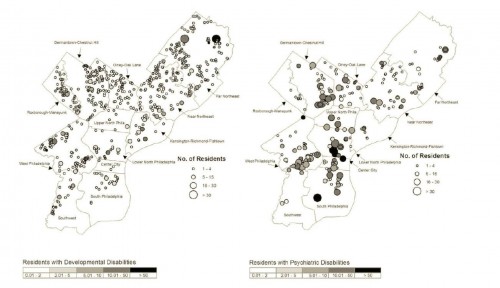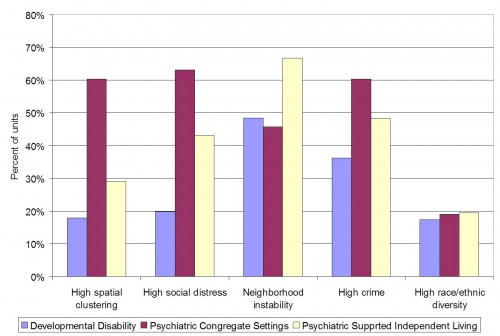I recently interviewed Ilene Flannery Wells, who discussed her struggles to care for her now-deceased schizophrenic twin brother Paul Flannery. Flannery spent much of his life in mental institutions of various sorts or in various community arrangements that never seemed to take hold.*
I was struck, listening to Ms. Wells, by how much tougher it can be caring for a loved-one with a severe mental illness (SMI) than it is to care for someone with uncomplicated intellectual disability as our family does.
Public policies to support the intellectually disabled are more expansive, more generous, and more successful than those serving individuals with SMI. The alphabet soup can be somewhat forbidding, for example in Medicaid’s ICF/MR program. On the ground, though, housing supports and social services for intellectual disability are relatively generous, and are supported by powerful constituencies.
Meanwhile the severely-mentally-ill often rely upon a generally ungenerous patchwork of federal, state, and local assistance programs that do not work together well. My colleague Matt Epperson notes that the housing needs of mentally-ill individuals can also be more complicated and transient than is typically the case for individuals with intellectual disability.
The stigmas associated with the two conditions are also quite different. Vincent lives in a group home near our house. In an era of omnipresent NIMBY issues, his neighbors have never, to my knowledge, objected to that group home’s presence in their community. This is not the experience of many individuals living with severe mental illness.
Which brings me to my map of the week….
Above is a GIS analysis of Philadelphia data in a terrific 2009 paper by Wong and Stanhope. The maps show the size, clustering, and location of community-based supported housing for intellectually-disabled persons (the map on the left) and persons with psychiatric disorders (the map on the right).
Not surprisingly to anyone who works in this world, housing for intellectually disabled is small-scale and dispersed across Philadelphia neighborhoods. Residential SMI services are much more clustered.
Not in every way, but in the ways that count most, these facilities are located in tougher neighborhoods, too. Crime rates are higher. Average incomes are lower.
Not every disability brings the same social, political, or economic challenge. Not every disability brings the same social acceptance or public embrace, either. We see this basic fact on the map of Philadelphia. I’d bet similar maps could be drawn in Chicago and most other American cities.
*This paragraph was mildly revised to correct an editing error.



